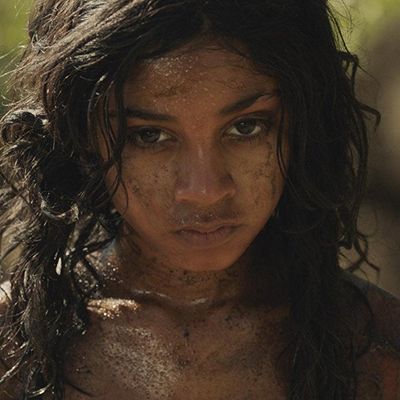
I screamed. Don’t be surprised if you do, too. And be prepared to have a nice long talk with your kids because “dark and gritty” doesn’t even begin to cut it with this one. If you were worried that the world didn’t need yet another Jungle Book remake, apparently the makers of Mowgli: Legend of the Jungle agree with you. Although it also takes full advantage of the motion-capture (“mo-cap”) technology utilized for Jon Favreau’s 2016 Disney version, this new movie goes in a completely different, infinitely more nightmarish direction. Some may find that a cynical move, but the portent and violence of Mowgli never feel fashionable, or contrived. The film reminds you that the jungle is a terrifying place, that nature is cruel, and humans even crueler.
Directed by Andy Serkis, himself a mo-cap specialist who has played everyone from Gollum in Lord of the Rings to Caesar in the Planet of the Apes series, Mowgli at times feels — and I mean this as a compliment — like the psychic runoff hiding beneath Disney’s colorful, kid-friendly Jungle Book pictures. In that sense, it’s closer in spirit to Rudyard Kipling’s original stories, though it strikes a more discordant note than those simple fables.
The basic setup and the characters are here. Our hero is still the young human child (Rohan Chand) saved by the black panther Bagheera (voiced by Christian Bale) and raised by a pack of wolves led by Akela (Peter Mullan). He’s still hunted and tormented by the Bengal tiger Shere Khan (Benedict Cumberbatch), a sneering, psychotic loner who seeks dominance over the beasts. Sent to live among humans in order to keep the animals safe from Shere Khan, Mowgli has a crisis of identity: While he can’t suppress his human instincts to fully become a member of the wolf pack, he also doesn’t know the first thing about people, whose bizarre rituals and sadistic practices confuse him.
If the earlier Jungle Book was a communitarian allegory about tribal loyalty, this one feels grounded in the base reality of survival. Previously, Mowgli and his wolf family tried to preserve a sense of belonging; here, that belonging never quite comes. The animals talk, and even play, but they remain other, and Mowgli feels like an outsider from the get-go. Meanwhile, Disney’s singing, dancing bear Baloo (voiced here by Serkis himself) has been returned to his rightful place as a hard-ass teacher of survival skills. And Bagheera is less the benevolent overseer and mentor we’ve come to know from previous iterations, but a harder, less forgiving taskmaster. The voice and faces are well-matched. It’s a common animation tactic for the characters to look a bit like the actors speaking the part. Usually, that makes for an impressive grace note. Here, it’s truly creepy. To look into the eyes of a panther and see Christian Bale looking back at you — it’s unsettling.
Oh, and the monkeys are fucking terrifying.
Clearly determined to show what this technology can do, Serkis swings his camera down cliffs and through caves and around rock croppings, and plunges us into the elements and the shadows. One stunning moment has Mowgli hiding in a lake, looking up from the depths at a blurry, blood-soaked Shere Khan drinking at the surface, the water turning crimson red. Elsewhere, we swirl madly around a melee as Kaa the python (Cate Blanchett) attacks, the snake’s velocity and sharp strikes creating the dizzying illusion that she might just have a thousand heads.
I have no idea who Mowgli is for, in this day and age. It’s probably too dark for most kids — there are a couple of moments here that scarred even me — and it seems unlikely that any adults would make this their date-night movie. But you have to admire that level of madness. And you have to admire its willingness to show us something striking, scary, and new. Once upon a time, children’s literature was the domain of the deepest fears and the most elemental, unsettling stories. Mowgli seems to be in tune with that tradition.
The 2016 Jungle Book was a marvel of animation and storytelling, a sweeping, picture-book-perfect adventure with just enough tension and emotion to keep us riveted and moved — the kind of family blockbuster that made you feel good about family blockbusters. Mowgli: Legend of the Jungle is a more troubled beast, the surly goth teen of the Kipling remake pack, with maybe a touch of pyromania and an alarming fondness for blood. Its edges are rougher, and its animation isn’t quite as jaw-dropping. But it’s also beautiful in its own phantasmagoric way.





